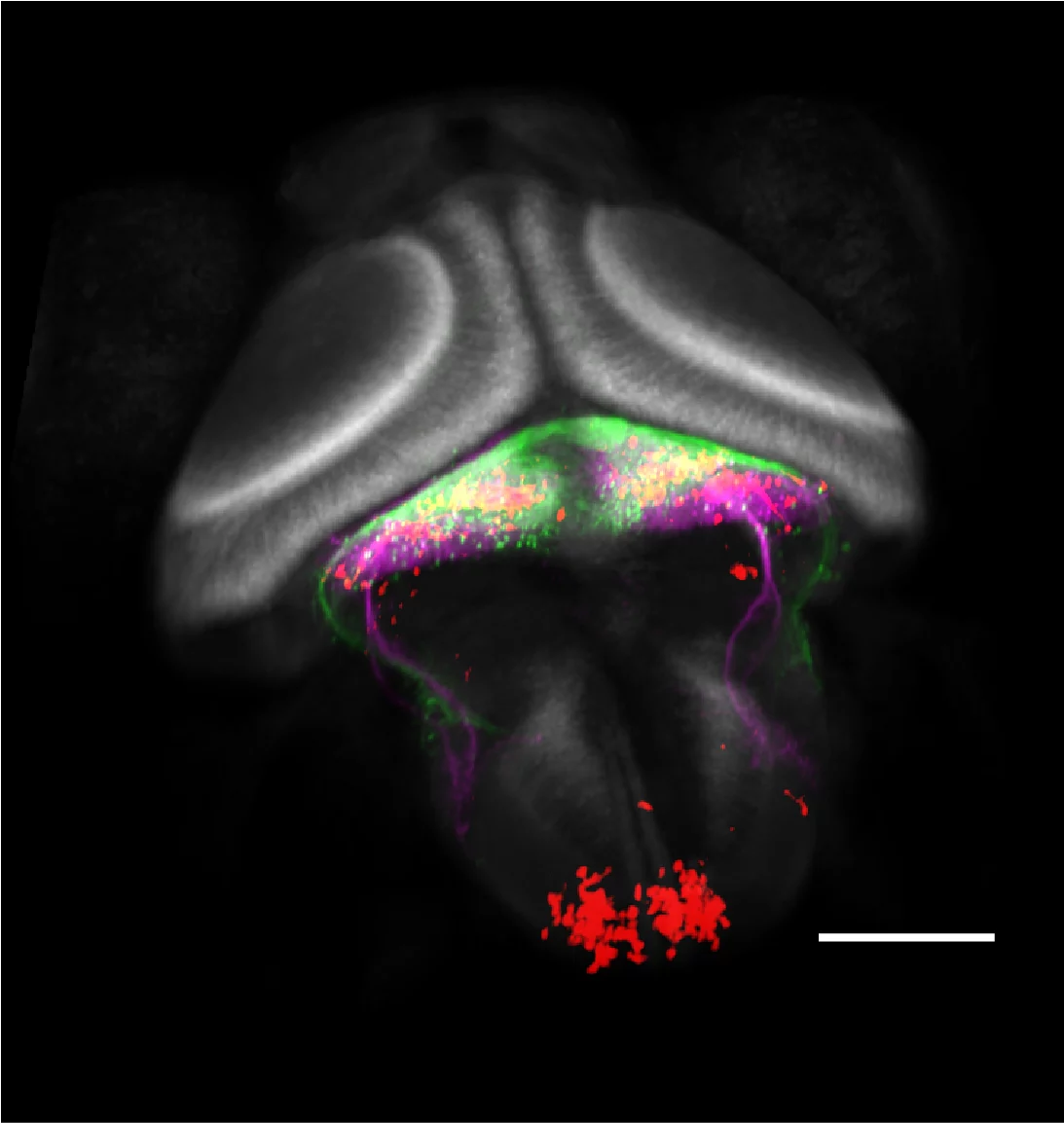Live from the cerebellum, the center for sensory-motor integration

In order to successfully survive in a changing environment, animals must be able to combine sensory inputs with information about their own movement. Complex motor behaviors, like walking or riding a bike, would be difficult to perform without feedback signals such as the sense of the feet touching the ground or the perception of movement with respect to the world. Scientists from the Max Planck Institute of Neurobiology in Martinsried use zebrafish as a simple vertebrate model to study how different kinds of sensory and motor information map onto the cerebellum. Their recent study shows that scientists need to rethink about how this large and important part of the brain of all vertebrates, including humans, works.
In a recent study published in the journal Current Biology, Laura Knogler and her colleagues from the Portugues group at the Max Planck Institute of Neurobiology used small translucent larval zebrafish to record cerebellar activity. For the first time, scientists were thus able to record from all the granule cells in the cerebellum of an awake, behaving vertebrate. As Laura explained: “This is possible because the brains of these fish are small, less than 1 mm cubed, and because we can express fluorescent proteins in their brains that light up when neurons are active.” When asked to summarize the main findings, Laura continues: “We were surprised to see that a large fraction of the cerebellar granule cells, nearly 50%, were active when we presented simple sensory stimuli such as light flashes or moving scenes. Some neurons were only active when the fish swam.”
